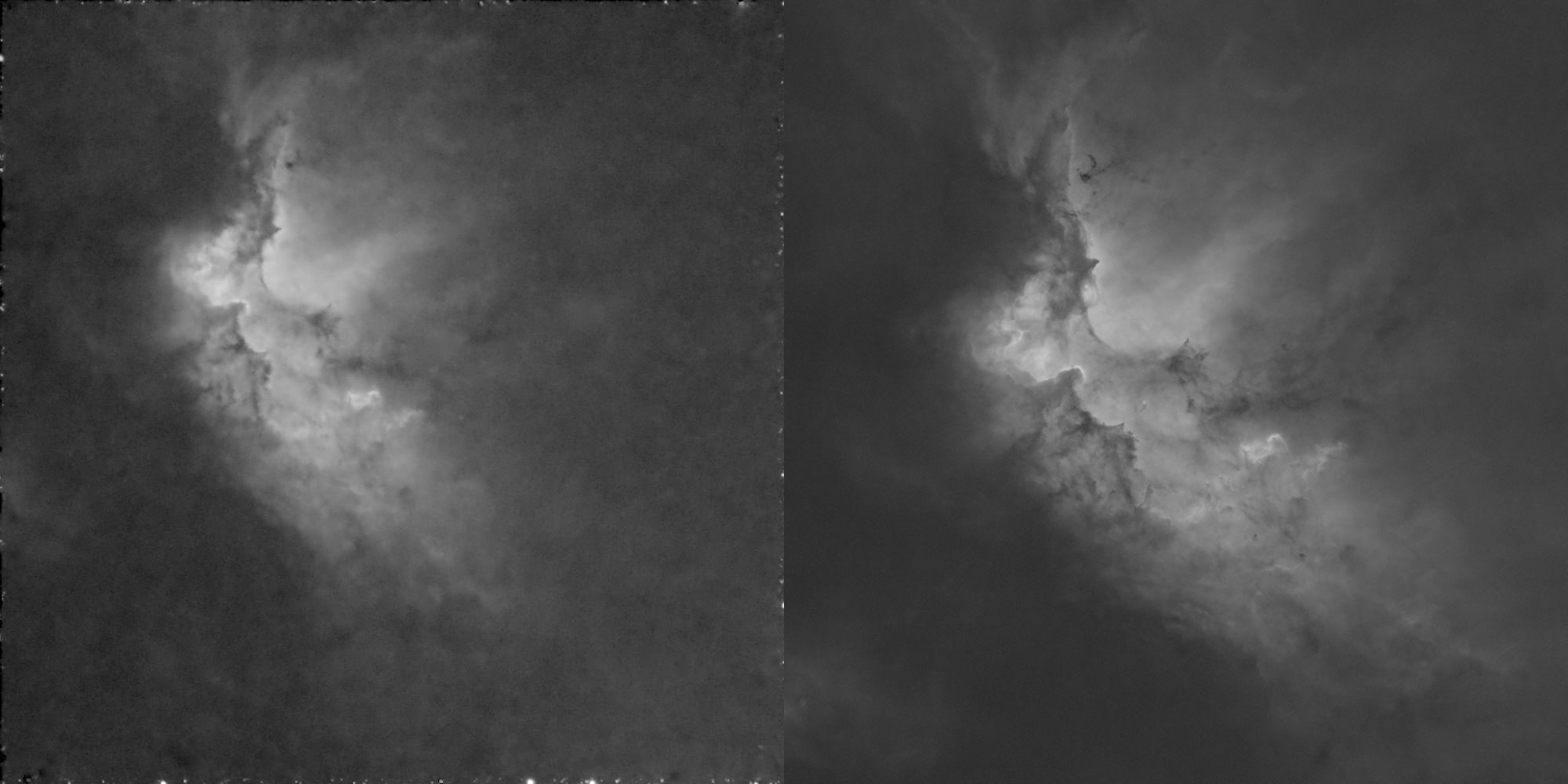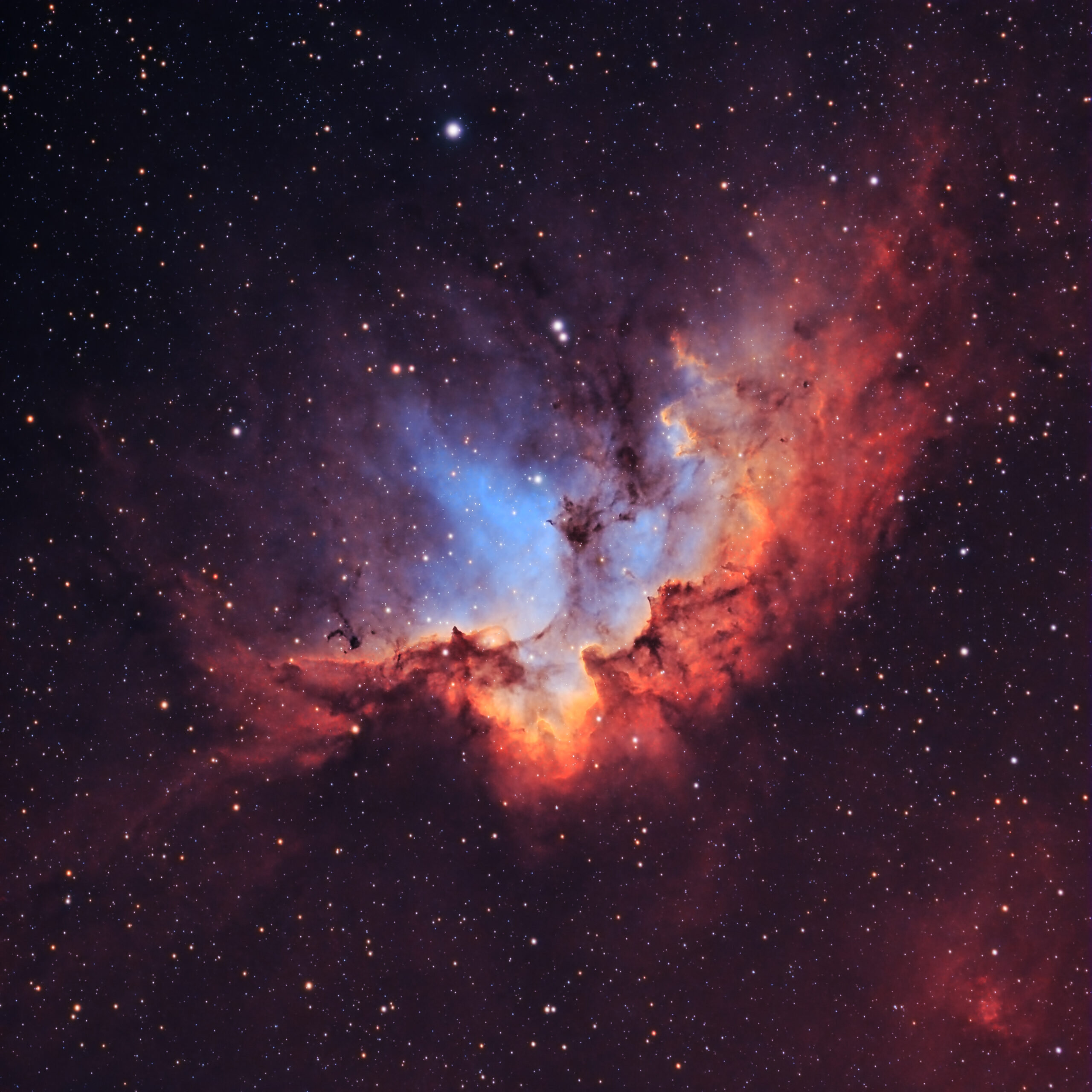When I purchased my Astro-Tech AT115EDT in March 2023, I knew then that I couldn’t wait till autumn when the Wizard Nebula NGC 7380 and Pacman Nebula NGC 281 came along. Besides the new telescope, I had also purchased a mono camera (an ASI533MM) in January 2023. Both nebulas were the perfect size for my new telescope and ASI533MM mono camera. Both had significant areas of Ha and Oiii that mono would bring out perfectly. Here we are in autumn 2023 and I’m on it. I recorded almost 12 hours of data (see details below).
Since the opportunity presents itself, I’d like to compare my data from 2022 when I first did NGC 7380 in color vs what I did this year in mono. This is not an apples-to-apples comparison. While the integration time for Ha and Oiii may be close, the difference in focal length is distracting and ultimately taints the comparison between mono and color.
The Wizard in Color

Above is the final integration of The Wizard that I did last year. I loved this photo last year despite the Wizard’s small size. However, this year’s photo which has more resolution and is much larger is my new favorite. No comparison.
NGC 7380 Color vs. Mono Comparison
As I noted above, the difference in focal length between a Redcat 51 (250mm) and AT115EDT (805mm) is pretty significant. Another enormous difference was the aperture. The Redcat 51 took in twice the light at f4.9 than the AT115EDT at f7.
With the OSC camera (ASI533MC), I used an Optolong L-Ultimate filter and extracted the Ha and Oiii signal in Astro Pixel Processor. With the mono image, I shot Ha and Oiii on Antlia 3nm narrow-band filters.
In order to do the best comparison between these 2 focal lengths, I cropped in on the Redcat 51 photos so you can see more details. I also used Star Xterminator to remove the stars so they didn’t distract from the nebula’s signal.


The Wizard’s color version (shot on an ASI533MC) had 8.5 hours of integration time using an L-ultimate 3nm filter which filters the Ha and Oiii signals which were then extracted in Astro Pixel Processor as mentioned above. This is equal to about 4.25 hours of Ha and Oiii.
The mono version had 4.5 hours of Ha and 4 hours of Oiii using Antlia 3nm filters. This makes it pretty comparable in integration time and filter band openings. However, because the AT115EDT was at f7 compared to the Redcat’s f4.9, it only received half the light. This means the Redcat 51’s adjusted integration time is more like 8.5 hours each or 17 hours total!
Clearly, the Redcat feels like there is more signal there since it’s brighter and more detailed. This could definitely result from having a larger aperture. The AT115EDT is less noisy and cleaner overall, likely because of its larger focal length.
Conclusion
I’m not sure what to conclude here; I don’t have a clear winner in either as far as comparing signal above. However, I do like the larger AT115EDT photo in mono because it brings out more of the blue/green color of Oiii and simply because it’s larger and has more resolution. Also note that the final mono image also included a Sii channel (3 hours more) and RGB stars. Please refer to the following integration details for the final mono image.
Integration Time for NGC 7380 in Mono
| Filter | Integration Time |
|---|---|
| Ha | 4h 24m |
| Oiii | 4h |
| Sii | 3h |
| RGB | 30m |
| TOTAL | 11h 54m |
